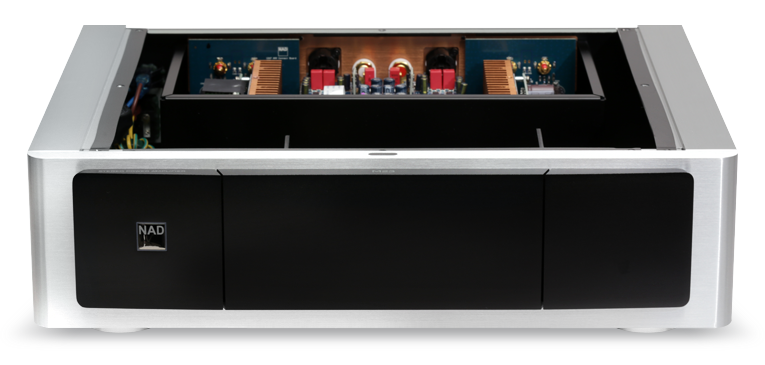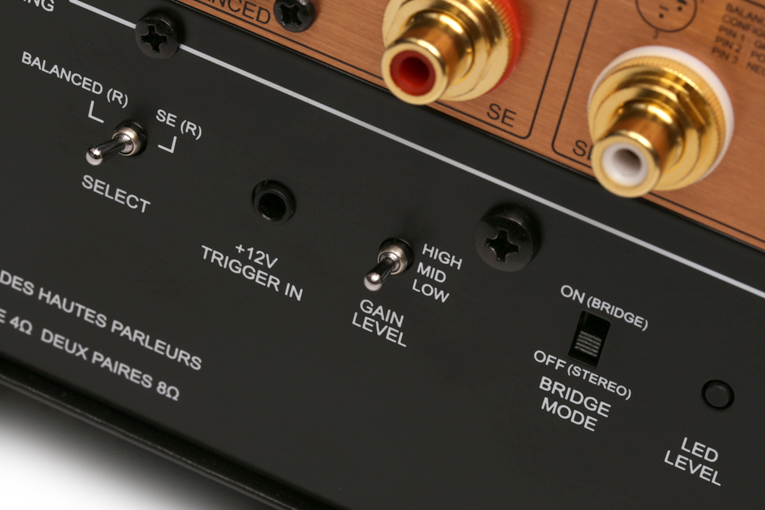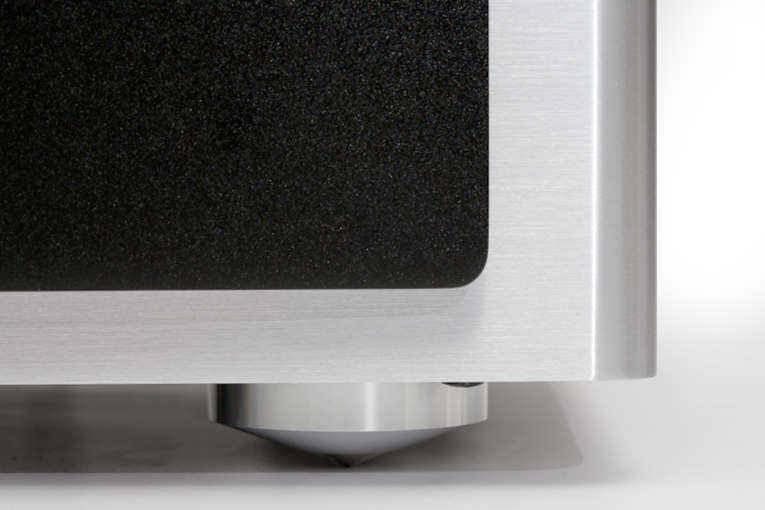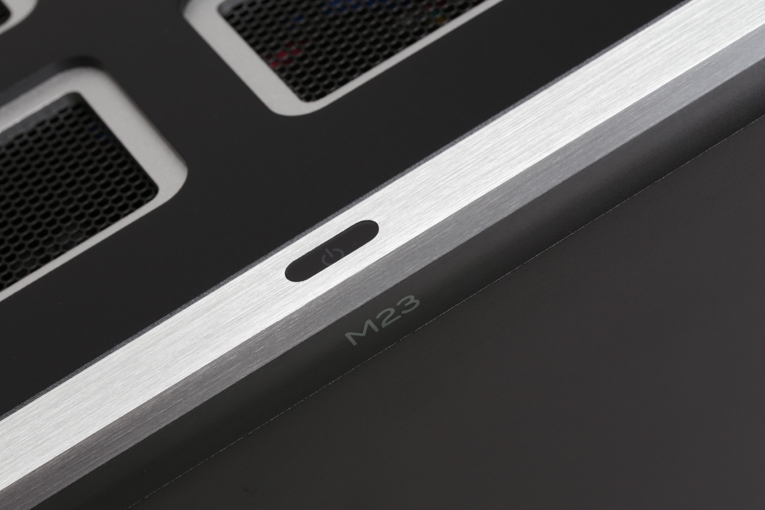 In his March 1 review of the NAD Masters M23 power amplifier, Roger Kanno wrote: “Purifi’s Eigentakt class-D amplification technology first came to our attention when SoundStage! Network founder and publisher Doug Schneider raved about the performance of an engineering evaluation sample utilizing the company’s OEM modules. We subsequently reviewed several Eigentakt-based products from NAD, including the C 298 stereo amplifier, the M28 multichannel amplifier, and the M33 integrated amplifier-DAC.” The M23, which is priced at $3749 (in USD), is NAD’s latest amplifier to use the Eigentakt tech.
In his March 1 review of the NAD Masters M23 power amplifier, Roger Kanno wrote: “Purifi’s Eigentakt class-D amplification technology first came to our attention when SoundStage! Network founder and publisher Doug Schneider raved about the performance of an engineering evaluation sample utilizing the company’s OEM modules. We subsequently reviewed several Eigentakt-based products from NAD, including the C 298 stereo amplifier, the M28 multichannel amplifier, and the M33 integrated amplifier-DAC.” The M23, which is priced at $3749 (in USD), is NAD’s latest amplifier to use the Eigentakt tech.
The M23 measures 17″W × 5.25″H × 17″D and weighs 21.4 pounds, which Roger pointed out “is relatively compact and light for a 200Wpc amplifier,” but is “not unusual for a class-D design.” He noted that it “shares the same elegant styling as other Masters components,” and he thought its look to be “gorgeous, yet still classy and understated.”

The only control on the front—a capacitive-touch standby button—resides discreetly on the top edge of the brushed-aluminum front panel, which bears a raised, dark-gray aluminum faceplate embellished with an illuminated NAD logo. On the M23’s backside are two pairs of inputs—one balanced (XLR) and one single-ended (RCA), with a switch to select between them—and a main power switch, two pairs of speaker-cable binding posts, an IEC-compatible power-cord inlet, a switch to select stereo or mono operation, and a three-position switch (labeled Low, Mid, and High) to select the amp’s gain level. In its stereo mode, Low is 19dB, Mid is 24dB, and High is 29dB. As a monoblock, Low, Mid, and High are 25dB, 30dB, and 35dB, respectively.
The M23’s output stage is based on Purifi Audio’s Eigentakt class-D amplifier topology, but Roger noted in his review that “NAD builds each pair of amplification modules for the M23 in-house under license from Purifi. This means NAD can leverage its substantial engineering and manufacturing resources to ensure the quality of each module rather than relying on an external supplier. NAD also uses its own switch-mode power supply and gain stage to make the Eigentakt module more compatible with the company’s components.”

In the supplied specs, NAD rates the M23’s power output as greater than 200Wpc into 8 ohms or 380Wpc into 4 ohms as a stereo amp, and more than 700W into 8 ohms as a monoblock. Our measurements of the Masters M23 corroborate these power claims, as well as NAD’s claims for ultra-low distortion and noise, which are hallmarks of the Purifi Eigentakt technology and a testament to NAD’s proper implementation of it.
At the beginning of his listening impressions, Roger stated that he found the sound of the Masters M23 “to be nearly flawless.” Like other Eigentakt-based amps he and other reviewers had heard, the M23 “essentially had no sonic signature.” He explained in his review that this resulted in “a sound that was detailed and highly resolving, while at the same time both natural and relaxed.”

When he played Colin Hay’s Man @ Work (16-bit/44.1kHz FLAC, Compass Records / Tidal), Roger wrote: “The immediacy and presence of Hay’s vocals on ‘Overkill’ were dazzling through the M23.” While “there isn’t much depth or width to this recording,” Roger noted that there was “an absolutely breathtaking clarity to the sound through the M23.” This clarity was evident on other recordings:
Billy Idol’s live version of “White Wedding” on VH1 Storytellers (16/44.1 FLAC, Capitol Records / Tidal) isn’t exactly an audiophile-quality recording either, but the utter coherence imparted by the M23 made it sound as if Idol and guitarist Steve Stevens were standing between the two speakers in my room. The individual notes of each pick by Stevens and the strumming of the chords were all clearly delineated from one another, and the clapping of the crowd in unison to the music was placed in perfect relation to the players, slightly behind and spread evenly from speaker to speaker.
Roger cued up “Break My Soul (The Queens Remix)” by Beyoncé and Madonna, because the track “is filled with unrelenting wave upon wave of EDM beats and rhythms that will slam your speakers and your room if your system is capable enough. But it is also an intricately mixed and complex track.” The sound from the M23 filled his room: “The opening, echoey vocals expanded in all directions and the finger snaps were imaged well outside the left speaker. Both lead and backing vocals emanated precisely from points throughout the soundstage, from side to side and front to back, with the samples of Madonna’s ‘Vogue’ set well back behind the speakers.” At this point, Roger found himself wishing that the M23 had “a tad more fullness in the bass,” but overall he thought that the “transparency and neutrality” of its sound was “astonishing.”

At the conclusion of his review, Roger acknowledged that the M23 isn’t the only great power amplifier that’s available. He stated that the M23 “compares very well” to his own pair of Anthem M1 monoblock amplifiers, and to the Bryston 4B3 stereo/mono amplifier that he reviewed in June 2017 and was recognized as a Recommended Reference Component in September 2017. But Roger pointed out that the M23 “is roughly half the cost of those two other amps.” For him, that makes it “a screaming bargain, and a great-looking one at that.”
But it’s not because of its price or appearance that the Masters M23 is being selected as a Recommended Reference Component this month—it’s solely for its performance. Roger was left in no doubt; among all the fine power amplifiers he has heard, “the NAD Masters M23 is one of the very best.”
Manufacturer contact information:
NAD Electronics International
633 Granite Court
Pickering, Ontario L1W 3K1
Canada
Phone: (905) 831-6555
Fax: (905) 837-6357
Website: www.nadelectronics.com






















